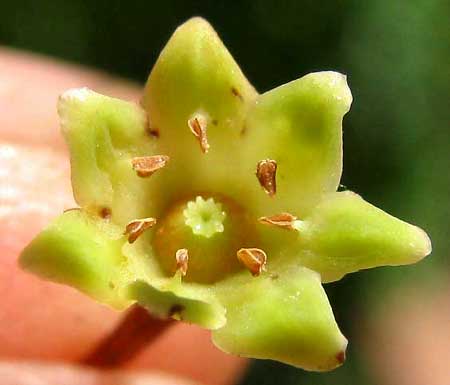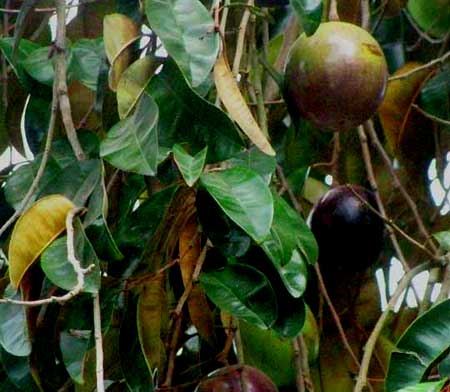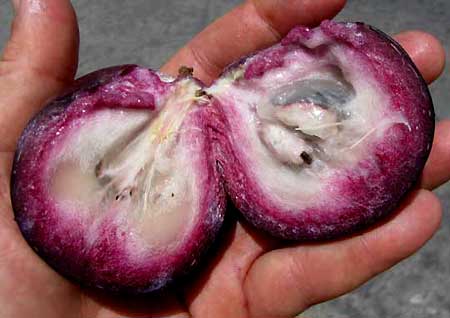
Yet another member of the Sapodilla Family, in which Sapodilla, Mamey and Canistel all are found, is the Star-Apple, or Caimito, Chrysophyllum cainito. Star-Apple is an especially handsome tree, often growing quite large, and it's easily identifiable at all times by its five-inch-long (13cm), leathery, evergreen leaves that are dark green and glossy on top but fuzzy-golden-brown below. Below, you can see one in flower in the late rainy season, in August:

The tiny flowers also are especially well formed, as shown below

An unusual feature of the blossom is that its pollen-producing stamens arise opposite the corolla lobes, at their bases. Stamens in most flowers alternate with their corolla lobes. Also, it's a little unusual for stamens to simply arise from a corolla wall instead of beneath the ovary. However, stamens like those are characteristic of the Sapodilla Family.
As with the other members of this family we've looked at, Star-Apple trees produce large, delicious fruits. You can see what ripe, purple-skinned, 3½-inch-across (9cm) Star-Apple fruits look like hanging on a tree below.

A sliced-open fruit is shown below.

Star-Apples are sweet and juicy, and their juice is so sticky that afterwards your lips slightly stick together, and things stick to your fingers. The fruit's skin is just tough enough to make you wonder whether to eat it or not. I eat the skin of fruits from trees I know don't have chemical residues on them, but I peel those from markets.
Star-Apples are native tropical American trees, but not to the Yucatan. They are planted widely throughout the Earth's tropics.